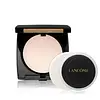What's inside
What's inside
 Key Ingredients
Key Ingredients

 Benefits
Benefits

 Concerns
Concerns

No concerns
 Ingredients Side-by-side
Ingredients Side-by-side

Water
Skin ConditioningCyclopentasiloxane
EmollientButylene Glycol
HumectantGlycerin
HumectantPolymethylsilsesquioxane
Dimethicone
EmollientTriethylhexanoin
MaskingPEG-10 Dimethicone
Skin ConditioningPolyglyceryl-3 Dimethicone
CleansingDisteardimonium Hectorite
StabilisingSodium Glutamate
MaskingSorbitan Sesquiisostearate
Emulsifying1-Methylhydantoin-2-Imide
Skin ConditioningPhenoxyethanol
PreservativeSodium Dehydroacetate
PreservativeTriethoxycaprylylsilane
Polysilicone-2
Serralysin
EmollientCurcumin
AntioxidantGlucosyl Hesperidin
HumectantAscorbyl Glucoside
AntioxidantTocopherol
AntioxidantTitanium Dioxide
Cosmetic ColorantIron Oxides
Water, Cyclopentasiloxane, Butylene Glycol, Glycerin, Polymethylsilsesquioxane, Dimethicone, Triethylhexanoin, PEG-10 Dimethicone, Polyglyceryl-3 Dimethicone, Disteardimonium Hectorite, Sodium Glutamate, Sorbitan Sesquiisostearate, 1-Methylhydantoin-2-Imide, Phenoxyethanol, Sodium Dehydroacetate, Triethoxycaprylylsilane, Polysilicone-2, Serralysin, Curcumin, Glucosyl Hesperidin, Ascorbyl Glucoside, Tocopherol, Titanium Dioxide, Iron Oxides
Talc
AbrasiveParaffinum Liquidum
EmollientSqualane
EmollientZinc Laurate
Stearic Acid
CleansingLinalool
PerfumingGeraniol
PerfumingGlyceryl Stearate
EmollientTriethanolamine
BufferingIsoeugenol
PerfumingCholesterol
EmollientCoumarin
PerfumingAluminum Myristates/Palmitates
Emulsion StabilisingCinnamyl Alcohol
PerfumingFarnesol
PerfumingLimonene
PerfumingLanolin
EmollientHydroxycitronellal
PerfumingPetrolatum
EmollientCitronellol
PerfumingBenzyl Benzoate
AntimicrobialBenzyl Salicylate
PerfumingParfum
MaskingAlpha-Isomethyl Ionone
PerfumingHydroxyisohexyl 3-Cyclohexene Carboxaldehyde
MaskingHexyl Cinnamal
PerfumingButylparaben
MaskingMica
Cosmetic ColorantTitanium Dioxide
Cosmetic ColorantIron Oxides
Talc, Paraffinum Liquidum, Squalane, Zinc Laurate, Stearic Acid, Linalool, Geraniol, Glyceryl Stearate, Triethanolamine, Isoeugenol, Cholesterol, Coumarin, Aluminum Myristates/Palmitates, Cinnamyl Alcohol, Farnesol, Limonene, Lanolin, Hydroxycitronellal, Petrolatum, Citronellol, Benzyl Benzoate, Benzyl Salicylate, Parfum, Alpha-Isomethyl Ionone, Hydroxyisohexyl 3-Cyclohexene Carboxaldehyde, Hexyl Cinnamal, Butylparaben, Mica, Titanium Dioxide, Iron Oxides
 Reviews
Reviews

Ingredients Explained
These ingredients are found in both products.
Ingredients higher up in an ingredient list are typically present in a larger amount.
Titanium dioxide is a mineral UV filter widely used in sunscreens and cosmetics.
It is one of only two UV filters officially classified as “mineral” by regulatory agencies, the other being zinc oxide.
Titanium dioxide provides broad-spectrum protection mostly in the UVB and UVAII range, with some protection in the UVAI range.
While its UVA protection isn’t as strong as zinc oxide’s, the difference is minor.
A common myth is that mineral UV filters reflect UV light. However, modern research shows titanium dioxide absorbs UV radiation like chemical filters (~95% absorption & 5% reflection).
Thanks to its non-irritating nature, titanium dioxide is suitable for sensitive, acne-prone, or redness-prone skin. It is unlikely to cause "eye sting" like other sunscreen ingredients.
A major drawback of this ingredient is its white cast and thick texture. This is why mineral sunscreens often leave a white cast and are less cosmetically elegant than chemical/hybrid sunscreens.
To improve white cast and spreadability, micronized or nano-sized titanium dioxide is often used.
There are ongoing concerns surrounding nano-titanium oxide's impact on marine ecosystems.
There is no conclusive evidence that any form of titanium oxide (or any other sunscreen ingredients) will cause harm to marine ecosystems or coral reefs. The science is still developing but many consumers are keeping a close eye on this issue.
Please note, many destinations have reef-safety sunscreen rules. For instance, the U.S. Virgin Islands advises all visitors to use non-nano mineral sunscreens.
Nano mineral sunscreens once raised safety concerns about absorption into skin.
Extensive research has shown that they do not penetrate healthy or damaged skin; they remain safely on the surface and the top layer of dead skin (stratum corneum).
You'll likely find titanium dioxide bundled with alumina, silica, or dimethicone. These ingredients help make titanium dioxide highly photostable; this prevents it from interacting with other formula components under UV light.
Learn more about Titanium DioxideThis ingredient is a combination of red, black, and yellow iron oxide pigments. This combination of colors is usually found in foundation, because it results in a "skin" color.